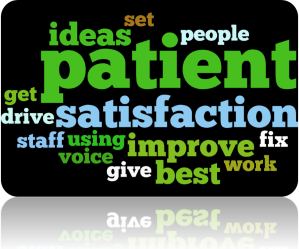
Most of us have seen flow charts. You document Step A followed by B followed by C. What does the employee do first? What report do they produce? To where do they route the call?
We’ve all seen e-newsletters that go out to customers. You share what you’re doing, note great offers, and pitch the latest product.
Everyone has gone to a business website. It says what we do, it’s organized by our products/industries, and it talks in the language to which we’re accustomed (I’m guilty of having “consultantese” throughout my site).
But what if we “customerized” our businesses? Let’s take a hospital. For processes, they might say – if a family member wants to visit the newborn baby, how would they want to find the hospital? What would they want the parking experience to be like? How would they want to find out where the relative is located and how they can find the baby? How would they want staff to greet them, and what would be the best exit experience?
Consider the sports team. They’re constantly sending out the marketing mailings to season ticket holders (STH), but what if they customerized the newsletters? Imagine Brian, the STH, getting an e-mail with a Subject heading identifying information about his favorite player. The body of his e-mail addresses only those things of interest to him – the kid’s club, his favorite visiting team coming to town, and a gift coming his way for his upcoming birthday. Brian’s e-mail is all about Brian, and the e-mail comes from his personal account representative, Marie.
If you work in a government organization, imagine having a website that’s been customerized. Instead of it being about government departments and services, it’s about the resident or business. Instead of the list of options including 38 departments and agencies, it lists common questions that the typical resident may ask. Instead of it listing 3 pages of detailed text instructions on how to appeal a tax bill or submit a plan to renovate a deck, it has a simple flow using customer terms and having graphics similar to most advanced websites nowadays.
To have the best experience for your customer, remove yourself from the internal focus of most companies. View your world through the eyes of the customer for the benefit of your customer.
Customerize Your Business.
Signup for FREE Tips! Contact Us More Resources for You Visit Our Home Page























